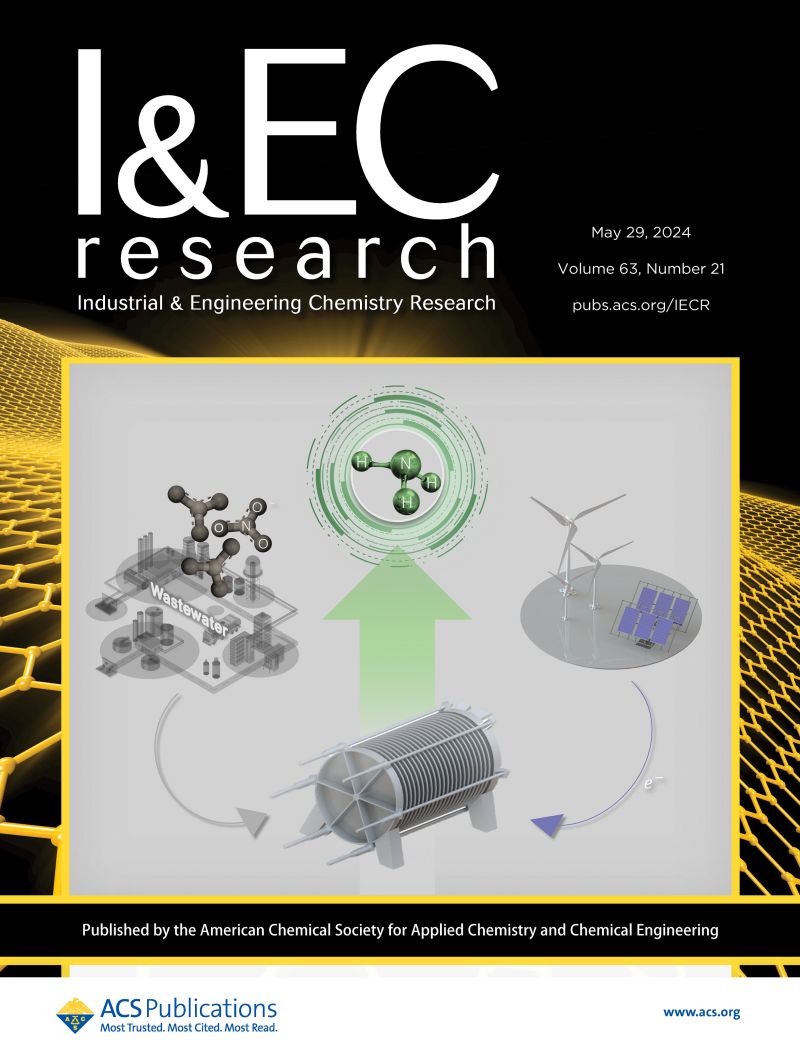Transforming Textile Waste: Innovative Pathways to High-Value Material Upcycling
IF 3.9
3区 工程技术
Q2 ENGINEERING, CHEMICAL
引用次数: 0
Abstract
The large-scale consumption of cotton and polyester-cotton blend fabrics has led to a rapid increase in textile waste generation, posing a significant environmental challenge. Conventional recycling methods for textile waste are often limited by low efficiency, high cost, and low added-value outputs. Developing effective upcycling strategies for these textiles is crucial to minimizing their ecological footprint. Thus, this study reports a comprehensive strategy to upcycle cotton and cotton-polyester blend waste textiles into high value-added photonic materials. The process involves a two-step approach of acid hydrolysis and hydrothermal treatment. Acid hydrolysis efficiently extracts cellulose nanocrystals (CNCs) while preserving the intact structure of the polyester fibers for further reprocess. Hydrothermal treatment of the hydrolysis byproducts yields carbon quantum dots (CQDs) with tunable luminescent properties, maximizing the cellulosic utilization. CNCs and CQDs are then coassembled into large-scale biodegradable and recyclable photonic films with tunable structural color and circular polarized luminescence, promising applications in anticounterfeiting. A life cycle assessment highlights the minimal environmental impact of this process compared with traditional methods. This innovative approach offers a sustainable solution for textile waste management, contributing to the production of high-value-added materials.

纺织废料转化:高价值材料升级回收的创新途径
棉花和涤棉混纺织物的大规模消费导致纺织废料的迅速增加,对环境构成了重大挑战。传统的纺织废料回收方法往往受到低效率、高成本和低附加值产出的限制。为这些纺织品制定有效的升级回收策略对于最大限度地减少其生态足迹至关重要。因此,本研究报告了一种综合策略,将棉和棉涤混纺废纺织品升级为高附加值的光子材料。该工艺包括酸水解和水热处理两步方法。酸水解可以有效地提取纤维素纳米晶体(CNCs),同时保留聚酯纤维的完整结构,以便进一步后处理。水热处理水解副产物产生具有可调谐发光特性的碳量子点(CQDs),最大限度地提高了纤维素的利用率。然后将cnc和CQDs共同组装成具有可调谐结构颜色和圆偏振发光的大规模可生物降解和可回收的光子薄膜,在防伪方面有很好的应用前景。与传统方法相比,生命周期评估强调这一过程对环境的影响最小。这种创新的方法为纺织废料管理提供了可持续的解决方案,有助于生产高附加值材料。
本文章由计算机程序翻译,如有差异,请以英文原文为准。
求助全文
约1分钟内获得全文
求助全文
来源期刊

Industrial & Engineering Chemistry Research
工程技术-工程:化工
CiteScore
7.40
自引率
7.10%
发文量
1467
审稿时长
2.8 months
期刊介绍:
ndustrial & Engineering Chemistry, with variations in title and format, has been published since 1909 by the American Chemical Society. Industrial & Engineering Chemistry Research is a weekly publication that reports industrial and academic research in the broad fields of applied chemistry and chemical engineering with special focus on fundamentals, processes, and products.
 求助内容:
求助内容: 应助结果提醒方式:
应助结果提醒方式:


